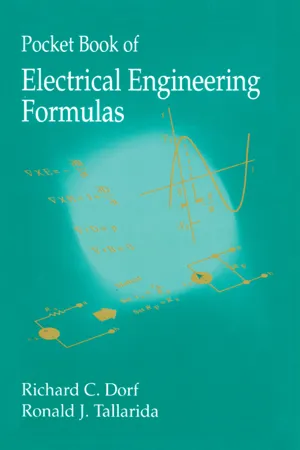Evaluating a Definite Integral
Evaluating a definite integral involves finding the exact numerical value of the area under a curve between two specified limits. This is typically done using techniques such as the fundamental theorem of calculus, integration by substitution, or integration by parts. The result of evaluating a definite integral is a single number representing the total area.
7 Key excerpts on "Evaluating a Definite Integral"
- eBook - ePub
- Arsen Melkumian(Author)
- 2012(Publication Date)
- Routledge(Publisher)
...9 Indefinite and definite integrals Integrals play a twofold role in calculus. The so-called indefinite integral is an operation inverse to differentiation: the integral of function f (x) is a function whose derivative gives us f (x). We have seen the importance of derivatives throughout the textbook, and naturally the inverse operation also plays an important role in mathematical and economic analysis. Later, in Chapter 12, we study relations between quantities and their rates of change – the so-called differential equations. Solving differential equations is impossible without indefinite integrals. The other type of integral is the definite integral. Geometrically a definite integral represents the area under a curve. But in applications the meaning of integration is totaling continuous quantities. For instance, to reconstruct profit from its rate of change we would integrate the latter function. Another application of integrals is in studying consumer–producer surplus. 9.1 Indefinite integrals If f (x) and F(x) are some functions of x such that then F(x) is called an antiderivative of f (x). For example, the function F 1 (x) = 3 x 2 + 5 is an antiderivative of f (x) = 6 x. Note that F 1 (x) = 3 x 2 + 5 is not the only antiderivative of f (x). In fact, the function f (x) = 6 x has infinitely many antiderivatives and all antiderivatives of f (x) are functions of the form where C is a constant. We will refer to F(x) = 3 x 2 + C as the general antiderivative of f (x) and we will write to indicate that. The symbol is referred to as the integral sign, 6 x is the integrand and C is the constant of integration. The expression is known as the indefinite integral of f (x) = 6 x. T HEOREM 9.1: Let f (x) be a differentiable function of x, and k, n and C be some constants...
- Stu Schwartz(Author)
- 2013(Publication Date)
- Research & Education Association(Publisher)
...The only way to do this is to recognize its form from the integration rules above. TEST TIP Integration is practice, practice, practice and many times, trial and error. Hopefully your calculus course has done a lot of drilling on integration techniques. You will certainly be tested on it on the AP exam. If there is a tough problem that appears in the multiple-choice section of the exam that you cannot do, you can always take the derivative of each of your 5 answers and see which one is the original expression. It is potentially time-consuming, but it works! DID YOU KNOW? An electrical engineer uses integration to determine the exact length of electrical wire needed to connect two substations that are miles apart. If the wire were in straight lines, basic arithmetic could be used. But because the cable is hung from poles, it is constantly curving in the shape of a catenary. The use of calculus allows a very precise figure to be calculated. Area and the Definite Integral Overview: The second part of a typical calculus course is called integral calculus. Differential calculus concerned itself with the problem of finding the slope of a tangent line to a curve at a point. Armed with that information, using linear approximation, we could approximate a value of f (c) at point P close to the point of tangency. In integral calculus we are concerned with finding the area between a curve, the x -axis and lines x = a and x = b. Just as the slope of the tangent line had a mathematical name, the derivative, the area between a function f (x) and the x -axis between a and b is called a definite integral and is written as. This is different from an indefinite integral ∫ f (x) dx as studied in the previous section. The connection between the indefinite and definite integral will be studied later in this chapter when we look at the Fundamental Theorem of Calculus. The notation makes sense by looking at the left-hand figure below...
- eBook - ePub
- Gregory Hill, Mel Friedman(Authors)
- 2013(Publication Date)
- Research & Education Association(Publisher)
...As the number of rectangles approaches infinity, the width of each rectangle becomes infinitely small. The left or right endpoint or the midpoint is no longer required to determine the height of the rectangle. Any value of x in each subinterval may be used to determine the height. This is because the difference between the left, right, and midpoint function values approaches 0 as ∆ x approaches 0. The result of this limit is defined to be what is called the definite integral of a function on a given interval [ a,b ]. Definite Integral Let f (x) be continuous on a given interval [ a, b ]. Let n be the number of rectangles used, so the width of each rectangle is defines the definite integral of f (x) on [ a, b ]. in symbols, in any interval [ a, b ], Of course, there is similarity to indefinite integrals: f (x) is the integrand and dx is the variable of integration. The main difference is that a definite integral has lower and upper limits, a and b, respectively. Another difference is that a definite integral is an accumulator of area, and that area has meaning as it relates to a particular application. As the introductory example to Section 6.3 showed, the area under the velocity graph was an accumulation of distance. It will help to keep in mind that a definite integral is really a sum of an infinite number of products, f (x i) · dx, and the signs of those products can be positive or negative. Definite Integral as Area If f (x) ≥ 0 on [ a, b ], then is the total area under f (x) and above the x- axis. If f (x) takes on both positive and negative values in [ a, b ], then is the net area between f (x) and the x- axis. The next few examples take a geometric approach to determining the value of a definite integral. Remember that this is a perfectly valid approach and is sometimes much more efficient than other methods, which will be discussed later. EXAMPLE 6.17 Find the value of Figure 6.10 SOLUTION The integral asks for the area under the graph of and the x- axis...
- J. Rosebush, Stu Schwartz(Authors)
- 2016(Publication Date)
- Research & Education Association(Publisher)
...PART IV INTEGRALS Chapter 12 Types of Integrals, Interpretations and Properties of Definite Integrals, Theorems I. TYPES OF INTEGRALS A. Indefinite integrals have no limits, ∫ f (x) dx. This represents the antiderivative of f (x). That is, if ∫ f (x) dx = F (x) + C, then F ′(x) = f (x). When taking an antiderivative of a function, don’t forget to add C ! For instance, ∫2 xdx = x 2 + C (The constant C is necessary because the antiderivative of f (x) = 2 x could be F (x) = x 2 or F (x) = x 2 + 1 or F (x) = x 2 – 2, and so on.) Sometimes, you are given an initial condition that allows you to find the value of C. For instance, find the antiderivative, F (x), of f (x) = 2 x, given that F (0) = 1. Then, F (x) = ∫2 xdx = x 2 + C → F (0) = (0) 2 + C = 1 → C = 1 → F (x) = x 2 + 1. Another way of posing this question is: Find y if and y | x =0 = 1. The equation is called a differential equation (more on this later) because it contains a derivative. B. Definite integrals have limits x = a and. If f (x) is continuous on [ a, b ] and F ′(x) = f (x), then (The First Fundamental Theorem of Calculus.) 1. A definite integral value could be positive, negative, zero or infinity. When used to find area, the definite integral must have a positive value. i. If f (x) > 0 on [ a, b ], then and geometrically it represents the area between the graph of f (x) and the x -axis on the interval [ a, b ]. For example, square units. Note that this could also have been solved geometrically because the area in question is that of a right triangle with a base of 3 units and a height of 6 units. Solving an area problem geometrically is really helpful when the question involves the integral of a piecewise linear function, for instance,. This represents the area between the function f (x) = | x | and the x -axis between x = –1 and x = 3...
- eBook - ePub
- Richard C. Dorf, Ronald J. Tallarida(Authors)
- 2018(Publication Date)
- CRC Press(Publisher)
...7 Integral Calculus 1. Indefinite Integral If F (x) is differentiable for all values of x in the interval (a, b) and satisfies the equation dy / dx = f (x), then F (x) is an integral of f (x) with respect to x. The notation is F (x) = ∫ f (x) dx or, in differential form, F (x) = f (x) dx. For any function F (x) that is an integral of f (x) it follows that F (x) + C is also an integral. We thus write ∫ f (x) d x = F (x) + C. (See Table of Integrals.) 2. Definite Integral Let f (x) be defined on the interval [ a, b ] which is partitioned by points x 1, x 2, …, x j, …, x n − 1 between a = x 0 and b = x n. The j th interval has length Δ x j = x j − x j −1, which may vary with j. The sum, ∑ j = 1 n f (v j) Δ x j,, where υ j is arbitrarily chosen in the j th subinterval, depends on the numbers x 0,…, x n and the choice of the υ as well as f ; but if such sums approach a common value as all Δ x approach zero, then this value is the definite integral of f over the interval a, b) and is denoted ∫ a b f (x) d x. The fundamental theorem of integral calculus states that ∫ a b f (x) d x = F (b) − F (a), where F is any continuous indefinite integral of f in the interval (a,. b). 3. Properties ∫ a b [ f 1 (x) + f (x) + ⋯ + f j (x) ] d x = ∫ a b f 1 (x) d x + ∫ a b f 2 (x) d x + ⋯ + ∫ a b f j (x) d x. ∫ a b c f (x) d x = c ∫ a b f (x.) d x. if c is a constant. ∫ a b f (x) d x = − ∫ b a f (x) d x. ∫ a b f (x) d x = ∫ a c f (x) d x + ∫ c b f (x) d x. 4. Common Applications of the Definite Integral • Area (Rectangular Coordinates) Given the function y = f (x) such that y > 0 for. all x between a and b, the area bounded by the curve y = f (x), the x-axis, and the vertical lines x = a and x = b is A = ∫ a b f (x) d x. • Length of Arc (Rectangular Coordinates) Given the smooth curve f (x, y) = 0 from point (x 1, y 1) to point (x 2, y 2), the length between these points...
- eBook - ePub
- Mike Aitken, Bill Broadhurst, Stephen Hladky(Authors)
- 2009(Publication Date)
- Garland Science(Publisher)
...performing an indefinite integral produces an answer that is a function. This can have any value, not only due to the presence of the undefined constant of integration, but also because it can be evaluated at any value of the variable x. By contrast, if the upper and lower limits are both numbers, a definite integral essentially defines a specific number – the constant of integration cancels out when the difference is taken between the antiderivative evaluated at two particular values of the variable. Before progressing to the next section you should attempt questions 3 and 4 from the End of Chapter Questions. 6.4 The area under a curve Figure 6.13 shows once again the dependence of the population of migratory birds on the time after arrival at their colony. However, this time the graph is in disguise, acting as a more general example of the class of functions, y (x), that remain positive for all values of their variable x within the region of interest. Thus y is used instead of p and x instead of t. The area of the region bounded by this curve, the x axis, and the two vertical lines at x = x 0 and x = x 1 is designated A. At the moment we have no way of knowing the value of area A, but we can ask ourselves a slightly easier question: what would be the change in this area, δ A, if the value of x 1 is increased to x 1 + δ x ? This change is illustrated in Figure 6.14. Apart from the small, approximately triangular region that is shaded in blue, all of the increase in area is accounted for by a tall, thin, green rectangle of height y 1 and width δ x, which has an area of y 1 δ x...
- F. Xavier Malcata(Author)
- 2020(Publication Date)
- Wiley(Publisher)
...11 Integrals Integration may be regarded as the inverse operation to differentiation; function F { x } is accordingly said to be the (indefinite) integral of f { x }, viz. (11.1) provided that dF / dx equals f { x }. Function f { x } is called integrand, and f { x } is integrable when F { x } exists. If the focus of one’s study is the area, A f, [ a,b ], below a curve of equation y = f { x } – lower bounded by the horizontal axis, described by y = 0, left bounded by the straight line of equation x = a, and right bounded by the straight line of equation x = b, then a constant, termed definite integral, will be at stake – such that (11.2) as will be seen, is normally calculated via a linear combination of the values taken by F { x }, as per Eq. (11.1), when x = a, i.e. F { x }| a, and when x = b, i.e. F { x }| b. More than one independent variable may be of interest, namely, toward calculation of the volume of a solid, e.g. (11.3) encompassing a bivariate function, z = f { x,y }, developing along a direction normal to the x 0 y plane, and defined within a (fully convex) surface domain on the x 0 y plane such that abscissa x varies between a and b > a – and, at each x, ordinate y varies between g { x } and h { x } > g { x }; this is illustrated in Fig. 11.1. Therefore, three functions – i.e. the integrand function, f { x,y }, as well as lower‐ and upper‐boundary function, g { x } and h { x }, respectively, need to be known to fully define a solid with associated volume V f,g,h, [ a,b ] ; note that the definition of g { x } may be splitted as for a ≤ x ≤ g − 1 { A } and for g − 1 { A } ≤ x ≤ b, and h { x } may likewise be defined as for a ≤ x ≤ h − 1 { B } and...






